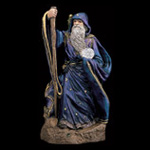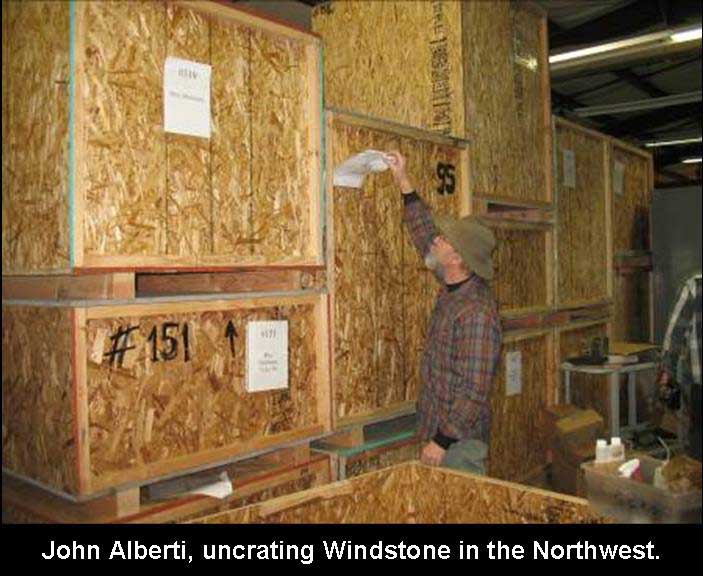

Having arrived at the blue metal building that is Windstone’s new home in the Northwest, I opened the door and stepped into a small foyer with a service window into the office. Windstone brochures were perched in a stand on the window counter. On the floor below the shelf an amazingly lifelike lizard sat sculpted on a rock, as if taking in the sun. The details were perfectly rendered, right down to the scales, but I overlooked the neatly folded wings that marked this lizard as one of the “garden dragons” in Windstone’s catalog.
Inside the office, a woman who laughed as much as she talked paused from filling orders to show me down the hallway to John Alberti’s office. (I would later learn that the laughing woman was John’s sister, Suzie, who had worked for her brother for years.)
Meeting the wizard
John broke away from peering intently at a computer screen and greeted me warmly. He was a slight man in a flannel shirt and khaki work pants greeted me warmly, picking up where our phone conversation left off. John’s eyes were dark and inquisitive, intense despite the spectacles on his nose. He wore his grey hair long, pulled back into a short ponytail, and his wispy, white goatee extended well below his chin.
His office was piled high with papers and boxes. Though he was still unpacking from the move from California to Oregon, I suspect his office will always be a jumble of in-the-works projects.
The tour
“Come on back and let me show you what we’re up to,” John said, leading me down the hallway, through a door and out into the jumble of Windstone’s manufacturing floor. Two months after the move north, it was more warehouse and less factory, with crates stacked two and three high.
Despite efforts to inventory every crate, many important and useful items – like finished figurines ready to sell – had been misplaced. (Spanish-speaking packers often didn’t know what to call the mythical creatures and exotic machinery they were packing, so every week brought a new discovery.)
“This will be our machine shop over here,” John says, pointing along the east wall. “You don’t happen to know of a good machinist, do you?” I gave him the name of the shop manager at the Hewlett-Packard site, which was closing down its machining center.
John opened a tall metal cabinet and pulled out a mold for a dragon to show me how his wife’s original sculpture is turned into a mold. Circling a triple-decker wall of crates, John pointed to the ceiling.
“We are still putting in the electrical and ventilation for the casting stations, which will go here.” He pointed to the floor along the west wall.
We stopped by the paint booths – already set up and working – where the plain plaster casts are given coats of luminous paint, some of which costs $250 a gallon. I was taken aback by the price of the paint.
“Oh yes,” John affirmed, “this is museum quality stuff.”
Over the course of the 1-hour walkthrough, it became clear that John Alberti is a bona fide wizard – a mechanical wizard – a man whose knowledge of machines, machine tools, electricity and applied physics allows him to create almost anything required to support the production side of his wife’s artistry.
While Melody carries the artistic vision of Windstone, John is the mechanical wizard who turns her artistry into high-quality collectibles ready to sell. On the side John designs and manufactures tools for making violins.
As we walked amid wooden crates, stacked two and three high, it was clear that the wizard of Windstone is facing one of his greatest challenges – bringing Windstone back to life in the Northwest.
I asked if there was a phoenix – the mythical bird that rises magically from the askes – in the Windstone catalog. There was not. Instead, Windstone itself is the phoenix. John, the mechanical wizard, is employing all of his magic to resurrect Windstone in the northwest.
Pendragon
Corvallis, Oregon
USA


But there is a pheonix being worked on right now. From what Melody has told forum members it will likely be a paint-your-own piece.
We’ve actually got two , one is a wall sconce .
A Phoenix Wall Sconce? That would be so cool to see!